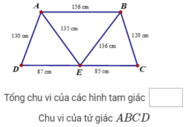Read the following passage and mark the letter A, B, C, or D on your answer sheet to indicate the correct answer to each of the questions.
It’s a sound you will probably never hear, a sickened tree sending out a distress signal. But a group of scientists has heard the cries, and they think some insects also hear the trees and are drawn to them like vulture to a dying animal. Researchers with the US Department of Agriculture’s Forest Service fastened sensors to the bark of drought-stricken trees clearly heard distress calls. According to one of the scientists, most parched trees transmit their plight in the 50-hertz to 50kilohertz range. (The unaided human ear can detect no more than 20 kilohertz). Red oak, maple, white pine, and birch all make slightly different sounds in the form of vibrations at the surface of the wood.
The scientists think that the vibrations are created when the water columns inside tubes that run along the length of the tree break, a result of too little water following through them.
These fractured columns send out distinctive vibration patterns. Because some insects communicate at ultrasonic frequencies, they may pick up the trees' vibration and attack the weakened trees. Researchers are now running tests with potted trees that have been deprived of water to see if the sound is what attracts the insects. “Water-stressed trees also smell differently from other trees, and they experience thermal changes, so insects could be responding to something other than sound”, one scientist said.
Question: Which of the following is the main topic of the passage?
A. The effect of insects on trees.
B. The vibrations produced by insects.
C. The mission of the U.S Forest Service.
D. The sounds made by trees.
















